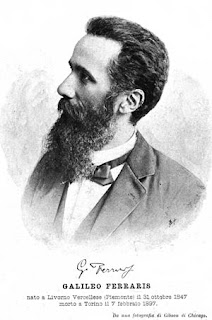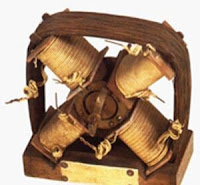Creator of New York’s Christopher Columbus Monument
| Gaetano Russo's monument to Christopher Columbus has been in place since 1892 |
Russo’s 13ft (3.96m) statue of the 15th century Genoese explorer, carved from a block of Carrara marble, stands on top of a 70ft (21.3m) granite column, decorated with bronze reliefs depicting the Niña, the Pinta and the Santa Maria, Columbus’s three caravel sailing ships. At the foot of the column there is an angel holding the globe.
Unveiled on October 12, 1892 on the 400th anniversary of Columbus’s voyage to the Americas, the statue was a gift to the city from New York’s Italian-American community, funded by a campaign by an Italian-language newspaper, Il Progresso.
For the laying of the statue’s cornerstone, a procession took place from Little Italy to what is now called Columbus Circle, at the southern end of Central Park, a distance of 6.5km (4.2 miles). Close to 10,000 people are said to have attended the dedication ceremony.
Additional ornamentation around the base of the column depicts Columbus’s journey, American patriotic symbols, and allegorical figures. The monument was restored in 1992 on the occasion of the 500th anniversary of his transatlantic crossing.
 |
| The Columbus Circle intersection, seen from the air, is an important part of the geography of New York City |
For decades, the Hagstrom Map Company sold maps that showed the areas within 25 miles (40km) or 75 miles (121km) of Columbus Circle. Even today, the New York City government employee handbook defines 'long-distance travel' as a trip beyond a 75-mile (121km) radius of Columbus Circle.
The monument came under threat in 2018 as part of a nationwide review of whether figures regarded traditionally as American heroes, and who were celebrated in statues and other monuments, deserved their status. Columbus was controversial for having taken back indigenous people from the Caribbean to sell in Spain as slaves and there were calls for the statue to be taken down.
However, after Governor of New York Andrew Cuomo, who is descended from Campanian immigrants, had spoken out on behalf of his fellow Italian-Americans in upholding the importance of Columbus in the links between the two countries, it was announced that the statue would stay in place but that there would be notices placed in or around Columbus Circle explaining the history of Columbus and of the monument.
| The angel holding a globe on the pedestal of the Christopher Columbus Monument |
Little is known about his early life until 1870, when he received a grant to go to Rome where he studied with Girolamo Masini and Giulio Monteverde.
He worked in both Rome and his native Sicily. In the capital he was commissioned to sculpt bas-reliefs for the facade of the building that now houses the Academy of Dramatic Art, the pediments of the Policlinico Umberto I and the cenotaph dedicated to Felice Bisazza.
In Messina he was commissioned to make funerary sculptures for the monumental cemetery and the monument to Marco Miceli Puglisi, dated 1877, on which stands an imposing winged figure.
No record of Russo exists after 1908 and it is assumed that he died in the devastating earthquake of the same year that destroyed much of Messina and may have killed up to 200,000 people. It is known that his brothers, Letterio and Stellario, both perished and that all the buildings in and around Via dell'Oliveto, a heavily populated area of the city, disappeared.
 |
| Messina's 12th century cathedral, originally built by the Normans, suffered serious damage in the 1908 earthquake |
Messina is a city in the northeast of Sicily, separated from mainland Italy by the Strait of Messina. It is the third largest city on the island and is home to a large Greek-speaking community. The 12th century cathedral in Messina has a bell tower which houses one of the largest astronomical clocks in the world, built in 1933. Originally built by the Normans, the cathedral, which still contains the remains of King Conrad, ruler of Germany and Sicily in the 13th century, had to be almost entirely rebuilt following the earthquake in 1908, and again in 1943, after a fire triggered by Allied bombings.
| Gaetano Russo sculpted the figures in the pediment over the entrance to the Policlinico Umberto I in Rome |
Located in the San Lorenzo quarter, the Policlinico Umberto I of Rome, where Russo sculpted the bas relief figures decorating the pediment over the main entrance, is the polyclinic of the faculty of medicine and surgery of the Sapienza Università di Roma. The city’s main hospital, it is the second largest public hospital in Italy. Its construction was promoted by Italian physicians and politicians Guido Baccelli and Francesco Durante and began in 1883 to plans by Giulio Podesti and Filippo Laccetti. The opening was presided over by the then university rector Luigi Galassi and by King Umberto I, after whom it is named.
More reading:
The Alabama legacy of Giuseppe Moretti
How Corrado 'Joe' Parnucci made his made on Michigan
The genius of Gian Lorenzo Bernini
Also on this day:
1891: The birth of World War One flying ace Luigi Olivari
1941: The death of mathematician Tullio Levi-Civita
1966: The birth of footballer Stefano Eranio
Home






